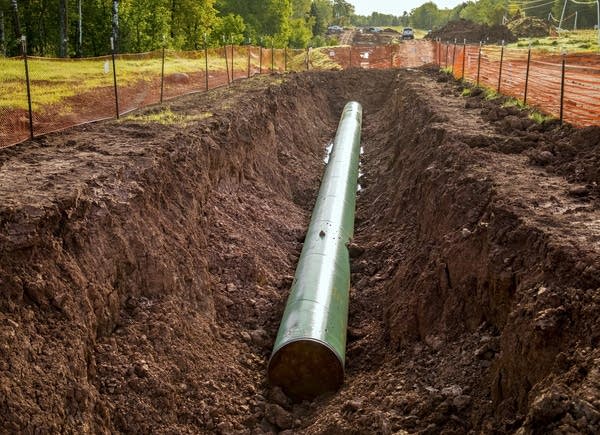Would denial of Line 3 project mean more oil trains?

A new segment of pipeline sits in the ground Friday, September 1, 2017 south of Superior, Wisc.
Derek Montgomery for MPR News 2017
Go Deeper.
Create an account or log in to save stories.
Like this?
Thanks for liking this story! We have added it to a list of your favorite stories.


